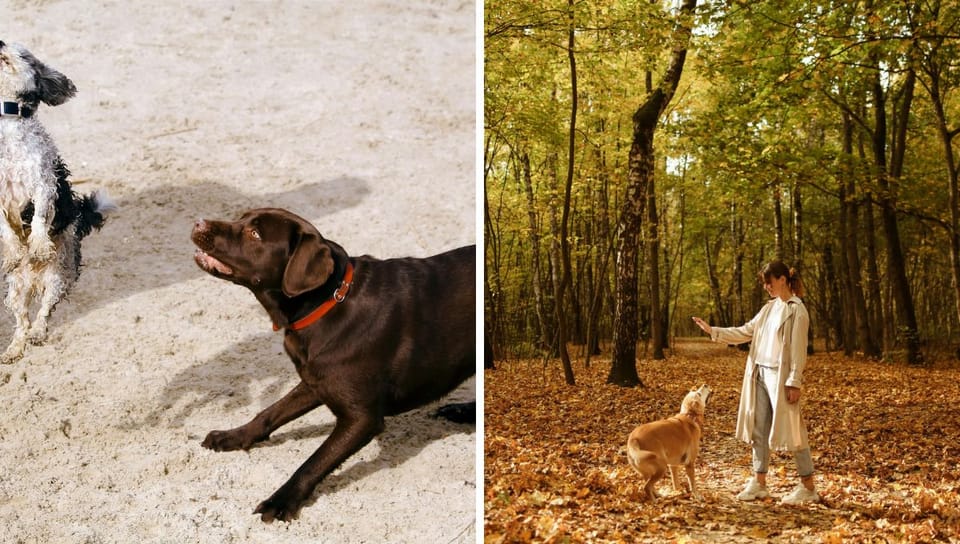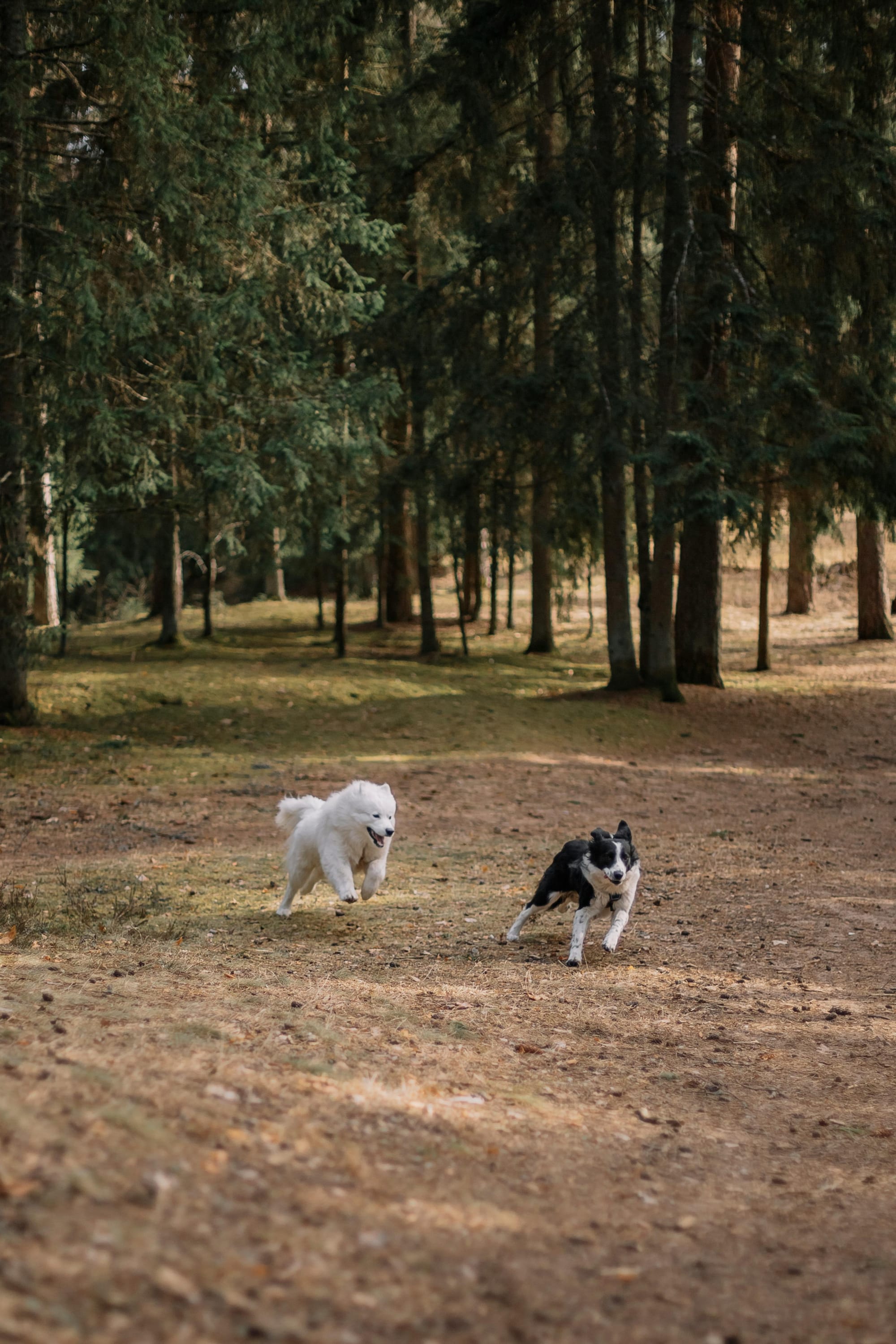How Can I Tell If My Dog Is Happy?

Key Takeaways:
- Understanding Body Language: Recognizing the signs of a happy dog through their physical expressions.
- Behavioral Indicators: Identifying actions and habits that signify contentment.
- Emotional Well-being: Ensuring your dog’s happiness through mental and emotional care.
The Joyful Wag: Understanding Your Dog's Tail Language
A dog's tail is like a window to their soul. When your furry friend is happy, their tail will often wag energetically. This wagging can vary in speed and intensity, but a broad, sweeping motion usually indicates joy. For instance, when you come home after a long day, and your dog greets you with a wagging tail, it's a clear sign of their happiness and excitement to see you.
However, not all tail wags are created equal. A slow, stiff wag might indicate uncertainty or anxiety. It's essential to observe the context and other body language cues. For example, if your dog’s tail is tucked between their legs, it could signify fear or discomfort. Understanding these nuances helps you better gauge your dog's emotional state and ensure their well-being.
Bright Eyes and Relaxed Ears: Facial Expressions of a Happy Dog
A happy dog often has bright, sparkling eyes that seem to light up when they see you. Their eyes will be open and relaxed, without any signs of squinting or tension. When your dog is content, their facial muscles will be loose, and their overall expression will be one of calm and relaxation.
Ears also play a significant role in expressing happiness. When a dog is happy, their ears will be in a natural, relaxed position. Depending on the breed, this could mean ears that are slightly forward or to the side. If your dog’s ears are pinned back or constantly twitching, it might indicate stress or discomfort. Paying attention to these facial cues can help you understand your dog's mood and ensure they are happy and content.
Playful Behaviour: The Ultimate Sign of a Happy Dog
Playfulness is a hallmark of a happy dog. When your dog is in high spirits, they will often engage in playful behaviours such as fetching, running, or play-bowing. The play-bow, where a dog lowers their front legs while keeping their rear end up, is a universal sign of a dog inviting you or other dogs to play. This behaviour clearly indicates that your dog is joyful and energetic.
Additionally, happy dogs often exhibit a zest for life, showing enthusiasm for their favourite activities. Whether it's chasing a ball, playing tug-of-war, or simply running around the yard, these playful actions are strong indicators of a happy and healthy dog. Engaging in regular playtime with your dog not only strengthens your bond but also contributes to their overall happiness.

Appetite and Eating Habits: Indicators of a Happy Dog
A healthy appetite is often a sign of a happy dog. When your dog eagerly eats their meals and shows interest in treats, it usually means they are feeling good. Happy and content dogs will have regular eating habits and will not be overly picky about their food. If your dog suddenly loses interest in eating or becomes unusually finicky, it might be a sign of stress or illness.
On the other hand, a dog that is overeating or constantly begging for food might be experiencing anxiety or boredom. It's important to monitor your dog's eating habits and ensure they are getting a balanced diet. Providing a variety of nutritious foods and maintaining a consistent feeding schedule can help keep your dog happy and healthy.
Social Interactions: The Importance of Companionship
Dogs are social animals and thrive on interaction with their human family and other dogs. A happy dog will seek out social interactions and enjoy spending time with you. They will often follow you around the house, sit close to you, and show affection through licking or nuzzling. These behaviours indicate that your dog feels secure and happy in your presence.
Additionally, happy dogs usually get along well with other dogs and enjoy playing and socializing with them. Regular playdates or visits to the dog park can provide valuable social interaction and contribute to your dog's overall happiness. Ensuring your dog has plenty of opportunities for socialization is key to maintaining their emotional well-being.
Vocalizations: Understanding Your Dog's Sounds
Dogs communicate through a variety of vocalizations, and understanding these sounds can help you gauge their happiness. A happy dog will often make soft, contented sounds such as gentle whines, sighs, or low barks. These sounds indicate that your dog is relaxed and comfortable in their environment.
Conversely, excessive barking, growling, or whining can be signs of stress, anxiety, or discomfort. It's important to pay attention to the context in which these sounds occur. For example, if your dog is barking excessively when left alone, they might be experiencing separation anxiety. Understanding your dog's vocalizations and addressing any underlying issues can help ensure their happiness and well-being.
Physical Health: The Foundation of a Happy Dog
A healthy dog is a happy dog. Regular veterinary check-ups, a balanced diet, and plenty of exercise are essential for maintaining your dog's physical health. When your dog is in good health, they will have plenty of energy, a shiny coat, and a general zest for life. Regular exercise not only keeps your dog physically fit but also provides mental stimulation and helps prevent boredom.
Additionally, maintaining your dog's dental health, grooming them regularly, and providing preventive care such as vaccinations and parasite control are crucial for their overall well-being. A dog that feels good physically is more likely to be happy and content. Ensuring your dog receives proper healthcare is a fundamental aspect of their happiness.
Mental Stimulation: Keeping Your Dog's Mind Active
Mental stimulation is just as important as physical exercise for a happy dog. Providing your dog with toys, puzzles, and interactive games can help keep their mind active and prevent boredom. Mentally stimulated dogs are less likely to develop behavioural issues and are generally happier and more content.
Training sessions are another excellent way to provide mental stimulation. Teaching your dog new tricks or commands not only challenges their mind but also strengthens your bond. Regular training sessions can be a fun and rewarding experience for both you and your dog, contributing to their overall happiness.
Safe and Comfortable Environment: Creating a Happy Home
A safe and comfortable environment is essential for a happy dog. Providing your dog with a cozy bed, a designated space for their belongings, and a consistent routine can help them feel secure and content. Dogs thrive on routine and knowing what to expect each day can reduce stress and anxiety.
Additionally, ensuring your home is free from hazards and providing a safe outdoor space for your dog to explore and play can contribute to their happiness. A well-fenced yard, regular walks, and opportunities for exploration are important for your dog's physical and mental well-being. Creating a safe and comfortable environment is key to maintaining your dog's happiness.
Emotional Bond: The Heart of a Happy Dog
The emotional bond between you and your dog is the cornerstone of their happiness. Dogs are incredibly intuitive and can sense your emotions. Spending quality time with your dog, showing them affection, and providing positive reinforcement can strengthen this bond and contribute to their overall happiness.
Building a strong emotional connection with your dog involves understanding their needs, being patient, and providing consistent care and attention. When your dog feels loved and secure, they are more likely to be happy and content. The emotional bond you share with your dog is a vital aspect of their well-being and happiness.
Summary
Understanding your dog's happiness involves recognizing various signs and behaviors that indicate their well-being. From tail wagging and facial expressions to playful behavior and social interactions, there are many ways to gauge your dog's happiness. Ensuring your dog is physically healthy, mentally stimulated, and emotionally secure is essential for their overall happiness. By paying attention to these indicators and providing a loving and supportive environment, you can help ensure your dog leads a happy and fulfilling life.
FAQ
- How can I tell if my dog is happy?
You can tell if your dog is happy by observing their body language, facial expressions, and behaviour. A wagging tail, bright eyes, relaxed ears, and playful behaviour are all signs of a happy dog. Additionally, a healthy appetite, social interactions, and contented vocalizations can indicate your dog's happiness.
- What should I do if my dog seems unhappy?
If your dog seems unhappy, it's important to identify any potential causes of stress or discomfort. Ensure they are physically healthy by scheduling a veterinary check-up. Provide mental stimulation through toys and training, and create a safe and comfortable environment. Spend quality time with your dog and strengthen your emotional bond to help improve their happiness.
- How can I improve my dog's happiness?
You can improve your dog's happiness by providing regular exercise, mental stimulation, and social interactions. Ensure they have a balanced diet and receive proper healthcare. Create a safe and comfortable environment and spend quality time with your dog. Building a strong emotional bond and understanding their needs are key to enhancing your dog's happiness.

